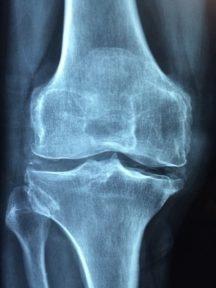
Osteoporosis is a condition where the bones can weaken and become brittle and prone to fractures from even the mildest stresses such as bending or coughing. Older women, especially Caucasian and Asian women, are at a much higher risk of developing osteoporosis. As this condition weakens the bones, fractures related to osteoporosis are common and often occur in the spine, wrist and hip.
Your bones are a dynamic system and are being constantly renewed – old bone is broken down and new bone is made. Osteoporosis occurs when new bone creation is unable to keep up with the loss of previous, old bone. Younger people’s bodies break down and build up new bones much faster, but this process can slow down as people age.
Osteoporosis Symptoms
In the earliest stages of osteoporosis, there may not be evident symptoms or any symptoms at all. However, once the bones begin to become brittle and weak, you may notice:
Back pain, often a result of a fractured or collapsed vertebra
Height loss over time
Bones that can break more easily
A stooped posture
Receding gums (due to bone loss in the jaw)
Weakened grip strength
Weak and brittle fingernails
Osteoporosis Treatment
Doctors often test for osteoporosis by first reviewing medical history and then conducting a physical exam. There may also be a blood and urine test to look for conditions that can cause bone loss. There may also be a bone density test conducted to determine whether or not you’re at risk for osteoporosis. If you do have osteoporosis, the doctor will likely create a treatment plan that includes medications and lifestyle changes. There currently is no cure for osteoporosis, however, proper treatment can strengthen and protect bones.
More than one million Americans suffer from heart attacks every year. Also known as myocardial infarctions (MI), heart attacks are the death of tissue due to a lack of blood supply that can cause long-term, if not permanent, damage to the heart muscle.
Heart Attack Symptoms
When blood supply to the heart is blocked, the result is a heart attack. Look out for the following signs and symptoms of a heart attack:
Discomfort, heaviness, pressure, squeezing or severe pain in the chest or arms that may spread to your neck, jaw or back
Fullness, nausea, heartburn, indigestion or abdominal pain
Cold sweat
Shortness of breath
Lightheadedness or sudden dizziness
Fatigue
What to Do If You Have a Heart Attack
If you are experiencing a heart attack, call 911 at the very first signs of trouble. If you don’t have access to emergency medical services, have somebody drive you to the nearest hospital right away.
Take nitroglycerin if prescribed by your doctor.
Taking aspirin during a heart attack can reduce the damage by keeping the blood from clotting. Take an aspirin if a doctor or emergency personnel recommend it.
Immediate treatment is crucial to lessen the damage to the heart and open up the blocked artery. The best time to treat a heart attack to ensure your heart has a higher chance of survival is within the first one to two hours after the symptoms start.
Heart Attack Treatments
Treatment begins immediately after a heart attack, often in the ambulance or at the hospital. Many heart attack medications can limit heart damage, prevent blood clots and stabilize plaque. Medications can help your heart function better, reduce pain and avoid life-threatening heart damage.
Notice: The above information is an educational aid only. Always consult your healthcare provider to ensure the information displayed on this page applies to your personal circumstances.
Your Cart
Your Cart